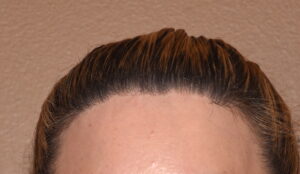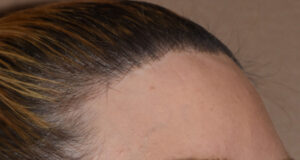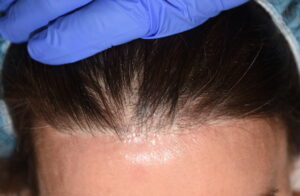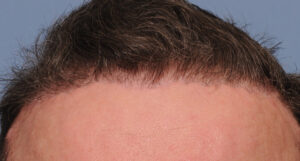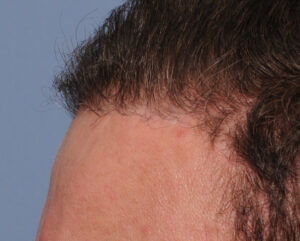The location of the frontal hairline in both men and women is genetically determined. It serves as the determinant of the upper third of the face which is defined as between the eyebrows and the frontal hairline. The frontal hairline has any different patterns from a widow’s peak in the middle to varying degrees of no or some recession in the temporal areas. As a general rule the female frontal hairline is fairly stable while the make frontal hairline is often unstable.
The aesthetically desired vertical forehead lengths is in the range between 5 and 6.5cms. most would consider a halrine 7cms or longer as high which less than 5cms would be considered too short. But in the end it is always about the patient’s perspective of what looks good
In patients with vertically long foreheads which are always associated/caused by a high hairline, the frontal hairline advancement procedure is the one effective method for reducing its length. This is a procedure which works based on the principle of an epicranial shift. This means the entire scalp is freed up and moved forward. As a result the frontal hairline moves forward/down. The extent that it does so depends on how well the scalp is released and how much natural elasticity that it has.
Besides the epicranial shift principals, the other basic component of the hairline advancement is the location of the incision to do it. This is a frontal hairline incision at the junction of he forehead skin and the hairline. While an effective procedure it does create a fine line scar at a visible location of the upper forehead. How well this scar looks is a major factor on whether this is a good procedure, particularly for men.
To help patients understand what the scar looks like I have randomly pulled pictures of the frontal hairline advaneement scar to show an average looking result. These are from both men and women and represent mature scars that have evolved to their final appearance.
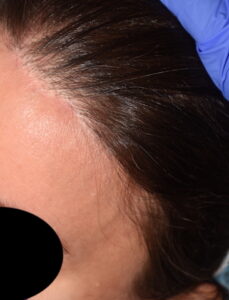
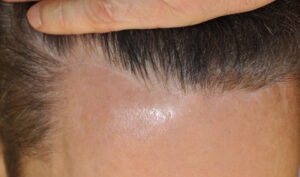
Dr. Barry Eppley
Indianapolis, Indiana



